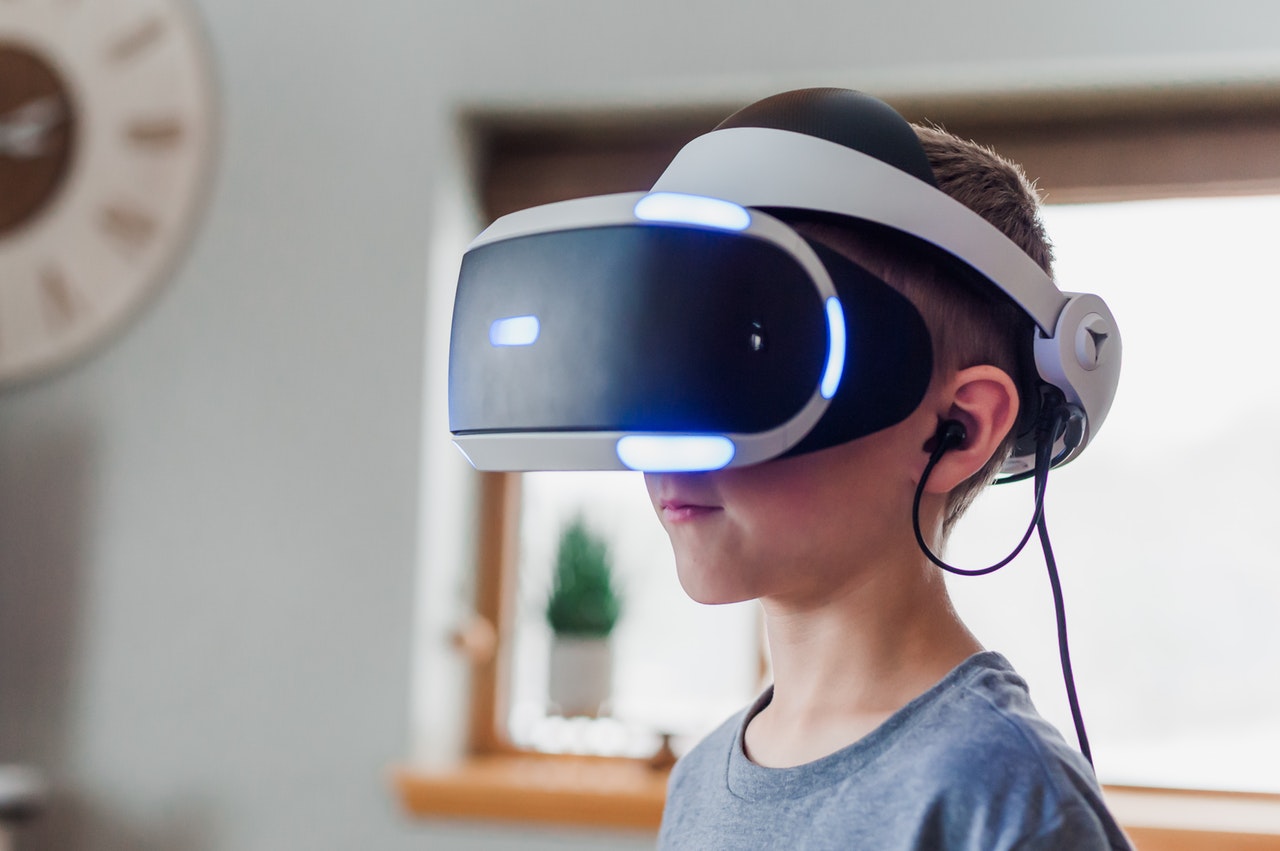In K-12, assistive learning can be an uphill war. Schools have to serve all students' requirements, but it can be challenging to design a curriculum that addresses every student, especially as an expanding quantity of schools experience overcrowding. That's where VR Technology for Education such as VR Mysticraft steps in.

What is Immersive Learning?
On the whole, it is an era of distraction, it might be easy to seize the attention but it is really difficult to retain the learners engaged throughout the program. Therefore, anything that is real is more likely to attach to the target audience more purposefully than anything else.
The purpose of engaging your learners or to present them with a genuine education environment is now turning out to be one of the greatest competitive distinguishers on the eLearning platform.
Immersive learning presents students with an environment that is extremely interactive both virtually and physically. This assists in replicating potential scenarios and in teaching particular techniques or abilities to the students.
Another reason for the effectiveness of VR Technology for Education and immersive learning is its relevance and realistic settings that have an enormous impact on the minds of a learner. Suppose, if your subject is related to mechanization and engineering, the setup of your program should match an automation factory.
This will generate a sense of belonging to the learners. Since, by emulating your physical surroundings, you can enhance the learning experience which ultimately adds a fabulous recall value in terms of education.
Nevertheless, immersive learning is not a traditional education format in which your students usually download the data on their device. It is more about the learning experience and to facilitate the learning format, where the virtual learning environment and simulation training is usually applied.
The Advantages of Immersive Learning
If you are wondering about the results and impact immersive learning can have on students, here is a list of some benefits of utilizing the strategy for your education platform:
- Immersive learning and VR Technology for Education enables you to exercise the skills of the real world but in a secure and protected environment. The activities are backed up with rich feedback and they do not disturb or influence the real customers or means in any way.
- This learning strategy helps in attaining mastery of behavior, system, or methodology as it includes guided rehearsals as many times as necessary - even 1 even 1000!
- Since VR Technology for Education contains a realistic and appealing nature of the environment, it builds an emotional bond with the learners with the learning activity or event.
- The learning is about being rooted in the actual context. This is done by presenting an actual environment simulation in which the learners are encouraged to work.
- VR Technology for Education builds a great platform and ability to let the geographically scattered learners meet together to role-play and in a virtually built environment. With that, they can also have conversations and exchange information and data - something more fitting for virtual worlds.
Schools are evolving, and conventional techniques of bestowing knowledge are being revisited. Immersive technologies are helping teachers to form bonds with students.
Voice-activated technologies; augmented, VR Technology for Education, and mixed-reality tools; and video conferencing devices are transforming communication models in K-12 schools. Teachers and students have unique ways to engage with each other, and scholars can cultivate deeper relationships with their companions and build fundamental soft skills.
VR Technology for Education, for instance, supplements a dynamic layer to the K-12 education by introducing immersive components that change the whole student experience. In a fast-evolving world, K–12 communities can use these tools to expand ahead real-world limitations and match the prevailing social expectations from the new generation.
VR teachings can take students across the globe without stepping out of the classroom. They also pave the way for a global association to engage in collaborative problem-solving, fluid conversation, and instinctive learning. Students learn via engaging and interactive methods, and, in the process, develop important social skills that parents regret their kids no longer have.
Gamification is another immersive way to engage students using VR technology for education. Interactive, combined technologies like these are gaining popularity. Digital avatars can raise students' self-confidence, improve their communication skills, and learn to accept heterogeneity.
Schools, as an institution, have always been the most suitable places to cultivate leadership, problem-solving, compassion, and interaction skills. Digital classroom technologies additionally encourage these competencies because learners are no longer restricted by language proficiencies, physical capabilities, or resource availability. They can participate in collective cultural experiences through the virtual world with schools from all across the globe.
Technology integration that stimulates a classroom lays a firm foundation for learners to interact better with the world, form social connections, be more comprehensive, and receive knowledge better. Lecture-based education is not so efficient for a digitally immersed age. Let's face it; youth no longer devour texts as we did. They devour the internet preferably.